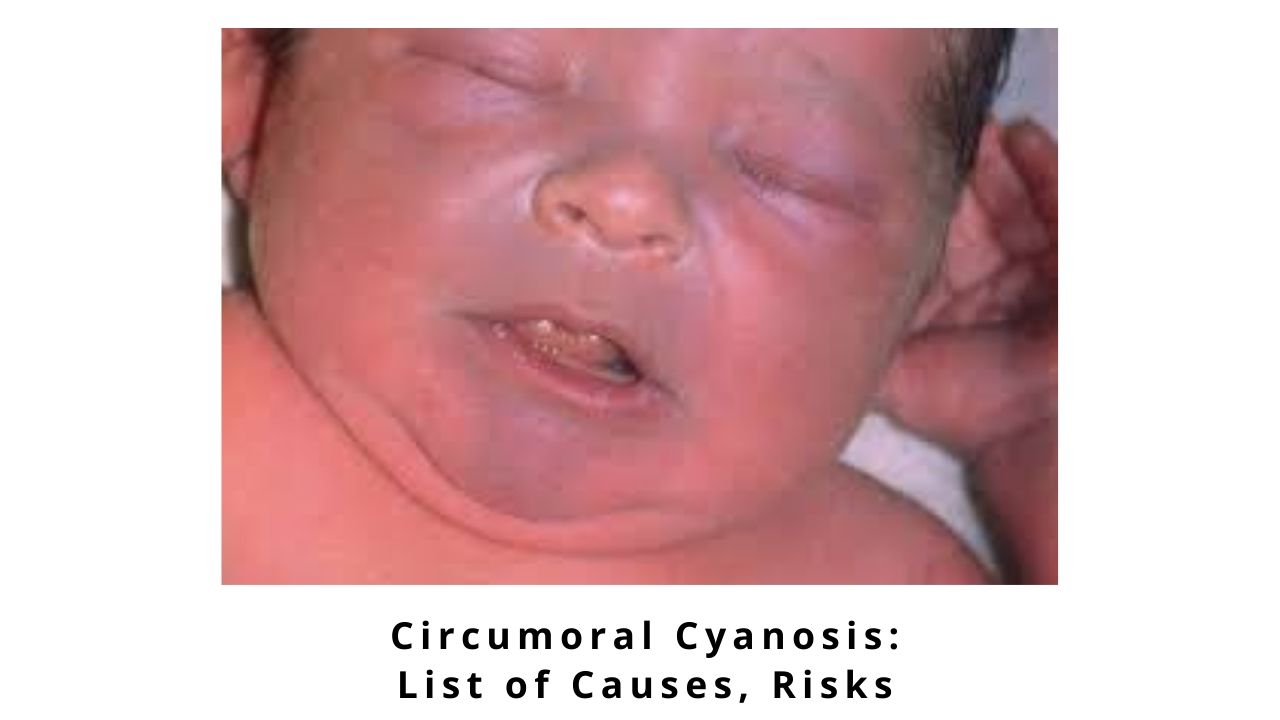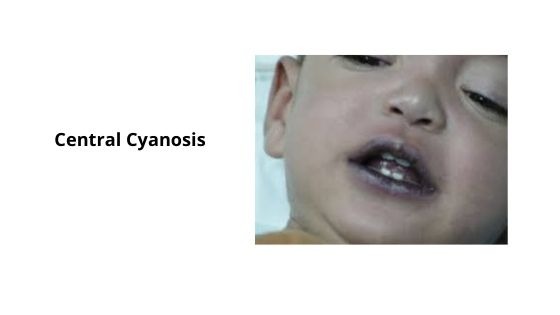Circumoral Cyanosis: List of Causes, Risks

There are several articles about Circumoral Cyanosis available on the internet.
But, do you get what is relevant and essential to know about Circumoral Cyanosis?
If No, then don’t worry!!!
We will resolve your every query in this critical article that covers everything you need to know about the causes, side effects, and risks associated with Circumoral Cyanosis.
Stay with us till the end of this article to get the easiest and the most useful information about Circumoral Cyanosis.
Define Circumoral Cyanosis?
Circumoral Cyanosis is a state observed in infants where the skin appears to have a bluer shade. It occurs in certain areas where the blood vessels don’t get sufficient oxygen.
Discoloration happens around the face area of infants. You can mostly find this discoloration on the upper lips of infants.
Some infants have a darker skin tone. For those infants, you can observe a greyer or whiter discoloration. Circumoral Cyanosis is also seen in areas around feet and arms.
Define Central Cyanosis?
Central Cyanosis does happen if the color of the blood changes based on the absence and presence of oxygen in the blood.
If we talk about the Red hue of blood, this happens if the oxygen amount is adequate in the blood.

If the oxygen is not present or very less amount of oxygen is present, than the skin tone changes to blue or purple.
It is found in the torso, head areas of the body. This condition is found not normal in infants. There can be some issues with the infant’s heart or lungs.
Various Causes of Circumoral Cyanosis
Circumoral Cyanosis is caused by certain specific conditions which we will explain in this article:
Acrocyanosis
Acrocyanosis is something that is a part of Circumoral Cyanosis. This condition usually occurs in infants during the first few days of their birth.

This ailment occurs when in infants, the smaller blood vessels get reduced and shrunk when they caught a cold.
Exposure Due to Cold Weather or After Getting Out with Hot Water Bath
Circumoral Cyanosis can also be caused in certain older children if they get exposure after getting out of Hot Water or after coming out of Cold Weather.
This type can be easily treated if they don’t get any exposure. In case if this is not treated well, it can lead to severe issues.
If not cured well, it can also lead to severe lung or heart problems.
Some other causes of Circumoral Cyanosis are stated as under:
- Pulmonary Hypertension in Infants
- Heart Disease due to hereditary issues
- Respiratory issues in Infants
- Inhalation of Smoke by kids
- Something gets stuck in the throat of kids that blocks the passage of air, making it difficult for the oxygen to get inside the lungs.
- Some Kids have lung ailments like pneumonia, bronchiolitis, etc.
- Abnormalities in the oxygen content of blood, causing discoloration.
Risks Involved with Circumoral Cyanosis
Some of the common risks involved with Circumoral Cyanosis are as under:
Heart Rate Rising Rapidly
Infants who are having symptoms of Circumoral Cyanosis are having a rapid increase in their heart rate.
This is because the blood vessels get thinner, and the blood doesn’t reach the lungs and heart, which in turn increases the rate of heartbeat.
Breathing Difficulties
It has been reported that infants have reported breathing difficulties as the heart is no longer able to circulate blood properly, as the blood vessels are very thin.
If the issue is not treated correctly, it can result in even death.
Excessive Sweating
In older children, it is observed that there is a tendency to sweating a lot. This is also related to the fact that the blood is not reaching the heart properly. As a result, you have fatigue and feel restless.

How Circumoral Cyanosis is diagnosed?
Circumoral Cyanosis can be diagnosed by the Doctor, by first taking the past medical information about the child and how much oxygen is present.
To check oxygen content in the body, the Doctor performs an oxygen saturation test, this is entirely painless, and no needles are used.
Some bandage sort of feature is placed on the toe or finger to measure the oxygen level is measured.
Depending on the test results, the Doctor can know the root cause or can ask for further examination and consultation.
If the Doctor feels that some specialist guidance is required, then the Doctor suggests visiting the heart or lung specialist to know what treatment will go well for treating Circumoral Cyanosis.
Treatment for Circumoral Cyanosis
Usually, this condition goes away in 95% of children on their own. As this is quite commonly found in Infants, days after their birth after having mother’s milk, the immune system of infants improve.
In case the condition of the child is getting worse, take him to the doctor for immediate treatment.
Some infants are put in the incubator after birth, so as they are appropriately monitored by the doctors and have a check on their condition.
What can be done if your child is suffering from Circumoral Cyanosis?
It can be disturbing for any parent if they find blue discoloration in their child’s skin.
The best way to look out for Circumoral Cyanosis is to see under nail skin, tongue and lips and compare them.
Final Verdict on Circumoral Cyanosis
It is essential to understand that the article mentioned above describes the causes, treatment, and risks associated with Circumoral Cyanosis.
That’s not all!!!
It should always be kept in mind that the Circumoral Cyanosis is familiar with newborns; hence one shouldn’t be panic.
However, it becomes a little disturbing and terrifying for new parents.
Circumoral Cyanosis can become life-threatening only if there are issues with breathing difficulties in infants.
Hence this becomes very important to treat this disease properly for infants where this doesn’t go away on its own, and they, as there are several risks also associated with it.
I hope with this article you might have got some relevant information about the Circumoral Cyanosis, what its causes are, How to diagnose and treat this condition.
We hope you continue reading our articles to get all the vital information.
Sharing is caring! Your love and support motivates us!
